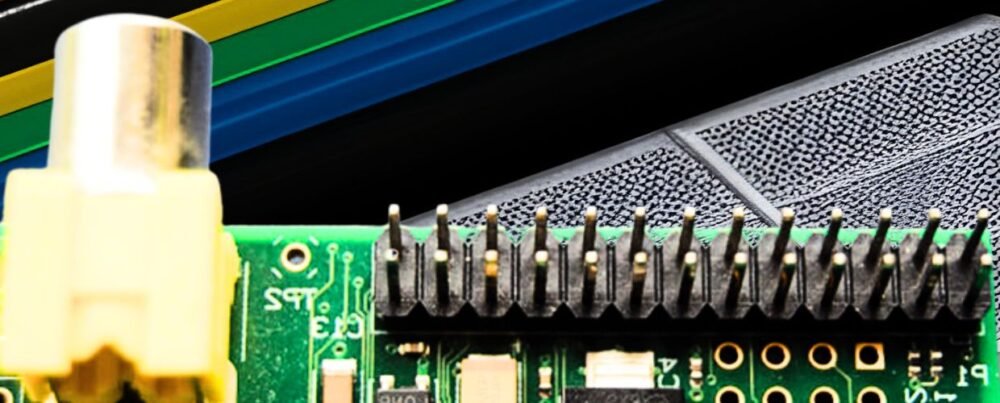In the intricate realm of modern electronics, the General-Purpose Input/Output, commonly known as GPIO, emerges as a versatile and fundamental component that empowers devices to interface and interact with the physical world. This comprehensive exploration delves into the core principles of GPIO, its historical development, its diverse applications across industries, its role in bridging the digital and analog domains, and the innovations that continue to drive its significance in embedded systems and beyond.
What is General-Purpose Input/Output (GPIO)?
At its essence, General-Purpose Input/Output (GPIO) is a feature in microcontrollers and other digital integrated circuits that enables them to control and monitor external devices. GPIO pins can be dynamically configured as input pins for receiving signals from external sensors or devices or as output pins for driving external components such as LEDs, motors, or relays. This flexibility allows the pins to adapt to a wide range of tasks, earning them the moniker “general-purpose” as they can be used for many functions.
The pins are typically digital, meaning they deal with discrete logic levels—usually represented as “high” (logic 1) or “low” (logic 0)—that correspond to voltage levels. However, GPIO pins can also handle analog signals with proper configuration and additional circuitry, opening doors to more diverse applications.
Historical Evolution and Development
The concept of General-Purpose Input/Output dates back to the early days of digital electronics when microcontrollers and integrated circuits emerged. As the demand for more versatile and interactive systems grew, the need for a standardized way to control and interface with external devices became apparent.
Early microcontrollers featured limited pins that could be configured as input or output. However, the development of more advanced microcontrollers led to an increase in the number of GPIO pins and the introduction of additional features, such as interrupt capabilities and pulse-width modulation (PWM) outputs. This evolution enabled microcontrollers to control various devices and respond more effectively to external events.
Diverse Applications Across Industries
GPIO’s adaptability and ease of use have become a cornerstone in various industries and applications, some of which are discussed below.
Embedded Systems
In embedded systems, GPIO pins are central in interfacing microcontrollers with the physical world. They enable the integration of sensors, actuators, and other external components, allowing embedded systems to sense, process, and respond to real-world events. Whether it’s reading data from a temperature sensor or controlling the movement of a robotic arm, GPIO pins provide the necessary link between the digital and physical domains.
Home Automation
GPIO pins are extensively used in home automation systems, enabling the control of lights, fans, door locks, and other smart devices. By interfacing with motion detectors or light sensors, GPIO-equipped microcontrollers can trigger specific actions based on environmental conditions.
Industrial Control
In industrial environments, GPIO pins monitor and control machinery and equipment. They facilitate the integration of sensors that monitor variables such as pressure, temperature, or humidity, allowing for real-time process control and ensuring operational efficiency and safety.
Internet of Things (IoT)
As the IoT continues to expand, GPIO pins provide a means to connect many devices and sensors to the digital ecosystem. They enable data collection from remote locations, enabling IoT devices to transmit information to centralized platforms for analysis and decision-making.
Bridging the Digital and Analog Realms
While GPIO pins are primarily associated with digital signals, they can also interface with analog signals through analog-to-digital conversion (ADC). By incorporating ADC functionality, microcontrollers can convert continuous analog signals, such as varying sensor voltages, into discrete digital values that can be processed and interpreted.
This capability broadens GPIO’s scope, enabling data acquisition from analog sensors like light, temperature, and potentiometers. This fusion of digital and analog capabilities allows developers to create sophisticated systems that interact with discrete logic and continuous physical phenomena.
Innovations and Future Possibilities
The evolution of General-Purpose Input/Output continues to be driven by the advancement of microcontroller technology.
Enhanced Functionality
Modern microcontrollers offer GPIO pins with enhanced capabilities, such as configurable pull-up and pull-down resistors, open-drain outputs, and programmable logic levels. These features empower developers to optimize signal integrity and tailor General-Purpose Input/Output behavior to specific application requirements.
Integration with Communication Protocols
Many microcontrollers now integrate General-Purpose Input/Output functionality with communication protocols like I2C, SPI, and UART. This integration simplifies the control of external devices and streamlines the exchange of data between microcontrollers and peripherals.
Ultra-Low Power Consumption
GPIO pins with ultra-low-power modes are becoming increasingly prevalent for battery-powered and energy-efficient applications. These modes enable energy conservation during inactivity, prolonging the lifespan of battery-operated devices.
Challenges and Considerations
While GPIO pins offer immense flexibility, several challenges and considerations merit attention. Some of them are discussed below.
Pin Limitations
Microcontrollers have a finite number of GPIO pins, which may become a limitation when designing systems with numerous external devices or sensors. Careful pin allocation and multiplexing strategies are crucial to effectively managing General-Purpose Input/Output resources.
Signal Integrity
When interfacing with external devices, factors like noise, interference, and signal degradation can impact signal integrity. Proper grounding, shielding, and signal conditioning techniques ensure accurate data transfer.
Real-Time Considerations
Latency in General-Purpose Input/Output signal processing can be a concern in time-sensitive applications. Interrupt-driven architectures and real-time operating systems (RTOS) address these considerations and ensure timely responses to external events.
Conclusion
General-Purpose Input/Output, the unassuming yet versatile hero of the digital landscape, empowers electronics to interact with the physical world, bringing control and connectivity to a myriad of applications. Its ability to adapt and facilitate communication with various devices, from simple switches to complex sensors, makes it an indispensable tool for engineers, makers, and innovators. As technology evolves, GPIO’s legacy remains unwavering—an embodiment of the seamless synergy between the digital and analog realms, bridging the gap between the virtual and the tangible in the ever-expanding universe of electronic systems.










